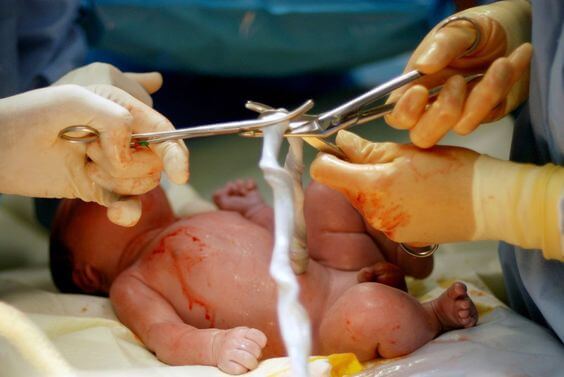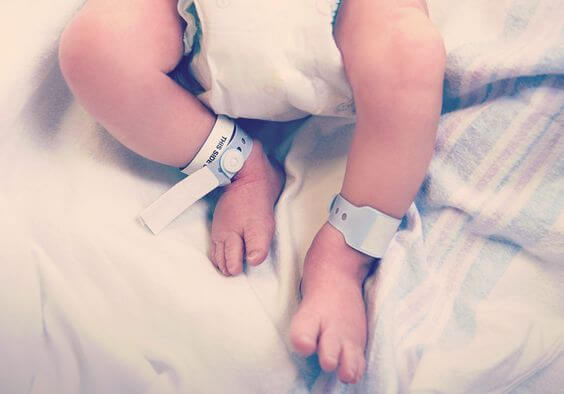Childbirth Dictionary: 10 Words You’ll Want to Know

For women, childbirth is a unique and unparalleled experience. At the end of all that effort, finally holding the baby in your arms feels like the greatest achievement. Although it may be painful and uncomfortable, it is the best day of a mother’s life. Here’s a “childbirth dictionary” including ten words you’ll want to know.
During childbirth, there are many women who don’t understand all of the terms being used by medical personnel. It can be unsettling to hear so many strange words that they may have never heard before.
And at the time of birth, it is very important to feel calm and confident. But sometimes, being unaware of what is actually happening can be a disadvantage. It is easy to feel nervous if we are confused by new terminology. This is why we want to share a basic glossary with you, with some of words that are most used by physicians during childbirth.
Childbirth dictionary: commonly used terms
Epidural
This is an anesthesia that helps to control pain during dilation and childbirth. This provides steady relief to the bottom of the body. At the same time, it allows women to remain conscious during labor. It decreases feeling in this area of the body, but the sensation does not completely disappear.
Epidural anesthesia is administered through a catheter, which is a tube that is very thin, hollow and flexible. This tube is inserted into the epidural space, which is located outside the membrane surrounding the spine and spinal fluid. This is the most widely used method for relieving pain during childbirth.
Caesarean
This is an operation that involves surgically extracting the baby from the mother’s womb. If the woman has complications during vaginal delivery, this procedure may be needed. It’s the last method doctors turn to in order to bring a baby into the world. It is performed with an incision in the lower abdomen and in the lower portion of the uterus.
There are many reasons why a woman may need a C-section. The decision will depend on the treating physician. The complications could have to do with either the baby or the mother. The most common scenario is abnormal positioning within the uterus, or developmental problems with the fetus.
For the mother, the main problems are health related, such as uterine fibroids or genital herpes. There may also be serious illnesses such as heart disease and pre-eclampsia, which can necessitate a C-section.
Contractions
These are involuntary and intermittent movements of relaxation and tension of the uterus. This muscle produces these movements in order to prepare itself for the process of labor. Milder contractions may also occur throughout the pregnancy. There is no need to be alarmed about this, as it is normal.
Contractions occur during the active phase of labor. They can change and occur at regular intervals ranging from mild to intense and painful.
Umbilical Cord

This is the cord that connects the placenta with the baby’s navel. Its function is to transfer the necessary blood and nutrients shared by the mother and her baby. Food travels through this during the pregnancy, up until birth. When the baby is born, it is cut and the placenta is also extracted, which can be used for medical purposes.
Placental Abruption
The placenta is the organ that nourishes the fetus during the 9 months of pregnancy through the umbilical cord. It usually separates from the uterine wall after delivery. If premature detachment occurs, this may cause complications before birth.
Forceps
These are an instrument used by the physician which assists in vaginal birth. They are used to help move the baby through the birth canal so that it can get out. The doctor will use these to guide the baby’s head. The mother will then push the fetus out the rest of the way.
Amniotic Fluid
This is the yellowish liquid that surrounds the fetus while it is in the mother’s womb. It protects it from possible external injury, and helps to maintain a constant temperature. It also allows the fetus to move around in an easy and comfortable way, and thus develop its muscles and lungs.
Pre-eclampsia
This is the pathological state of a pregnant woman. It is the combination of a series of ailments including high blood pressure and excessive weight gain. It is one of the most serious complications of pregnancy and affects 5% of pregnant women.

Premature Rupture of the Membranes
It occurs when the amniotic sac breaks down before the woman goes into labor. This situation is also related to what we know as placental abruption.
This text is provided for informational purposes only and does not replace consultation with a professional. If in doubt, consult your specialist.








